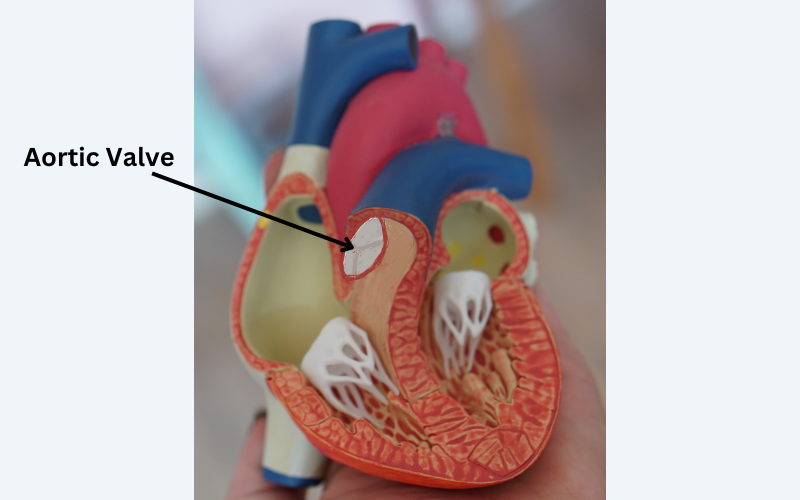
Aortic Valve Replacement
What is the aortic valve?
The heart has four valves that allow blood to flow in one direction and prevent flow in the opposite direction. This is the same function as valves used in plumbing. The aortic valve is part of the left side of the heart and is effectively between the heart and the body. It is located at the base of the big blood vessel that carries ‘pure’ blood from the main pumping chamber of the heart and gives off several branches to supply blood to various parts of the body. The function of the aortic valve is therefore to allow unobstructed blood flow to the body, when open and to stop blood getting back to the heart when closed.
What can go wrong with the aortic valve?
Generally the aortic valve is made up of three flaps but sometimes it has two flaps. Usually the aortic valve carries on doing its job well over a person’s lifetime. For unknown reasons, in some people however, the aortic valve can develop problems. With ageing, there can be calcium deposition on the valve making the flaps hard and inflexible. This can make the valve obstructive. On the other hand, the valve may not close properly allowing blood to leak back towards the heart.
How does a malfunctioning aortic valve matter?
When the aortic valve is abnormal and becomes obstructive or starts leaking, the heart function can be affected. This can result in symptoms affecting exercise tolerance and quality of life. If left untreated for too long, it can also lead to complications which can impact on life-expectancy.
What are the treatment options for a diseased aortic valve?
An abnormal valve may be found as part of unrelated tests. Not all abnormal valves need treatment only because an abnormality has been found. When the condition is in its early stages, the heart can cope well and people may not feel any symptoms related to this. Your doctor may organise regular follow-up for this because the condition can be progressive. Some medications can sometimes be helpful to allow the heart to cope better with the effects it faces due to the diseased aortic valve.
However when the severity of obstruction or the amount of leakage is bad enough to cause symptoms or affect the heart function, more radical treatment is required to stop further problems. Over several years, this has been in the form of surgery to replace the defective valve with an artificial valve. However there is another option that has become available in the recent few years which is called TAVI (short form for Transcutaneous Aortic Valve Implantation). Read more about artificial valves at this page.
What is AVR (Aortic valve replacement)?
Aortic Valve replacement is a heart operation that treats problems with a ‘diseased’ aortic valve, which is one of the valves in the heart regulating blood flow around the heart.
Are there other options for treating aortic valve problems?
Yes. There are other options which sometimes are good options for e.g. repair of an aortic valve or the Ross procedure. However these are performed in special situations and are uncommon procedures.
Leave a comment/ Ask a question
Practice Locations
My primary workplace is John Radcliffe Hospital, part of Oxford University Hospitals, Oxford. However I see patients referred from a number of hospitals across a wide area including Northampton General Hospital, Northampton (Northamptonshire); Great Western Hospital, Swindon (Wiltshire); Milton Keynes University Hospital, Milton Keynes (Buckinghamshire); Jersey General Hospital, Jersey; Kettering General Hospital, Kettering (Northamptonshire); Wycombe Hospital, High Wycombe (Buckinghamshire) etc.
About Me